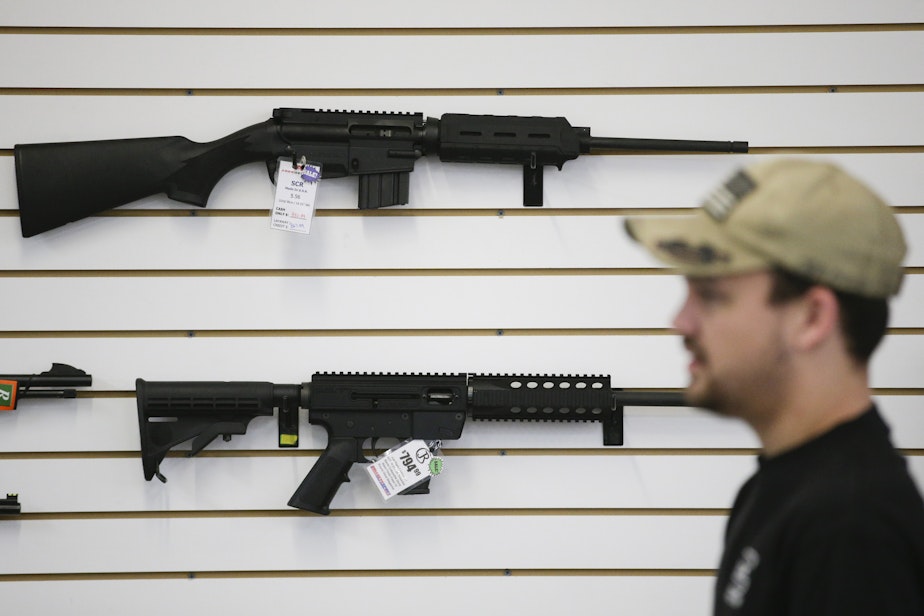8th District candidates on how they'd curb gun violence

This year’s race for Washington’s 8th Congressional District is considered among the country’s most competitive. In 2016 its voters chose Democrat Hillary Clinton along with Republican Dave Reichert. Now Reichert is retiring and Republican Dino Rossi is running to replace him.
But Democrats – all of them first-time candidates – also hope to claim his seat. This weekend the King County Young Democrats held a debate at Green River College to familiarize their members with three of the candidates running in the Aug. 7 primary.
They asked the first-time candidates to name a top priority.
Jason Rittereiser is an attorney who grew up in Ellensburg and previously worked as a criminal prosecutor in King County. He said his initial focus would be infrastructure, from roads to broadband.
“If Donald Trump wants to push infrastructure, let’s do it and let’s do it right,” he said.
Shannon Hader, an infectious disease doctor, grew up in Auburn and went on to oversee HIV and TB response at the Centers for Disease Control and Prevention. She said she’d focus on “health care for all,” and allowing states to pilot programs that might later be expanded. She said, “I truly believe from a federal level we have to supply flexibility and support for states that want to go ‘single payer’ or ‘all-payer’ to go ahead.”
Kim Schrier, a pediatrician in Issaquah, said addressing climate change is her top concern.
“It’s our responsibility to the generations that follow,” she said. “We’re already seeing superstorms, we’re seeing fires, we’re seeing what’s happening with agriculture, a decreased snowpack and an earlier growing season.” She said the 8th district is well situated to lead progress on wind, solar and hydropower and move away from fossil fuels.
The 8th district crosses the Cascades, drawing on urban and rural voters from Pierce County to Chelan.
The Young Democrats also asked the candidates for their solutions to gun violence.
Schrier said that as a pediatrician, she wants tighter gun laws to prevent suicides among patients she treats:
“When I see in particular a depressed teenage boy I know the difference between a contemplated suicide and a completed suicide is very often whether there’s a gun available in the home,” she said. “It is not controversial to raise the age for purchase from 18 to 21.”
Hader said the Second Amendment can coexist with new safety measures and new research.
“When I go across this district, gun owners and non-gun owners alike want fewer deaths by guns,” she said. “My niece and her husband own a hunting/fishing guide service; that’s their LLC and they feed themselves a lot of the time through what they hunt themselves and they are responsible gun owner and they want to make sure their 10-year-old child is safe when they go to school.
“There are immediate, commonsense actions we can take – closing the loopholes, having universal background checks, and making sure the systems talk to each other,” she continued. “We don’t have enough tools to prevent gun violence. Part of that is because CDC has been prohibited from doing research on gun violence prevention for the last two decades.”
Rittereiser said he grew up in a family with guns.
“The first rule in our house was gun safety,” he said. “It is time the U.S Congress had the moral authority to stand up and lead on this issue.
“As a criminal prosecutor I was put in the tough position where I had a young man in custody who had significant mental health concerns, and his mom was begging me not to let him out of jail and I couldn’t do anything about it,” he said. “She said, ‘he has access to guns, and he’s going to harm me or someone else.’”

